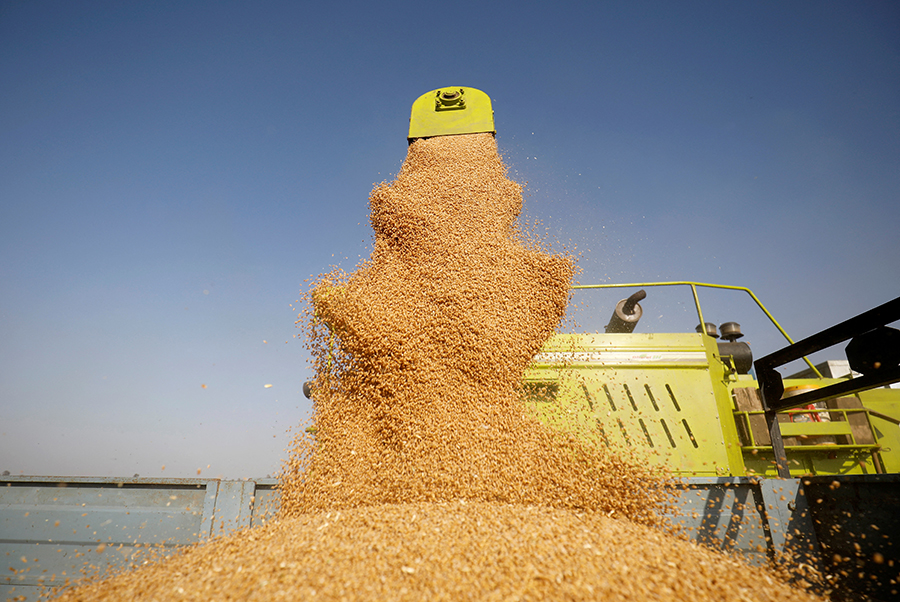
Published :
Updated :

Food security worldwide is declining and becoming a matter of major concern. There are many reasons behind the decline in food security or rise in food insecurity. Even before the start of the Russia-Ukraine war, the world had witnessed the alarming trend of food insecurity.
In September last year, the International Monetary Fund (IMF) pointed out that food insecurity has risen since 2018. Frequent and severe climate shocks coupled with the pandemic and regional conflicts disrupted the food output and distribution and increased the prices of foods.
So, with diminishing food security, things have worsened since the beginning of the war in Ukraine as it pushed up the prices of food and fertilisers. Some countries imposed export restrictions on food, creating a supply crunch in the global food market.
More than a year later, the World Bank, in its Food Security Update note released last month, mentioned that food insecurity has worsened over the past few years, with a notable increase in moderate and severe food insecurity from 2015 to 2022. The note added that conflict, natural disasters, and economic instability drive this alarming trend. The World Bank also added that food security is a growing concern, particularly in low- and lower-middle-income countries.
Food security, as defined by the United Nations Committee on World Food Security, means that all people, at all times, have physical, social, and economic access to sufficient, safe, and nutritious food that meets their food preferences and dietary needs for an active and healthy life.
The latest Hunger Hotspots report by the Food and Agriculture Organization of the United Nations (FAO) and the World Food Programme (WFP), released in October this year, warned that acute food insecurity is likely to deteriorate further in 18 hunger hotspots during the next six months - from November 2023 to April 2024. Some 22 countries or territories, including two regional clusters, comprised these hunger hotspots where Burkina Faso, Mali, Palestine, South Sudan, and Sudan are hunger hotspots of the highest concern.
As food insecurity grows, countries try to take various measures, including trade policy steps, to curb domestic risks. So, as the World Bank pointed out, trade policy becomes a significant source of risk for global food price stability. It also mentioned that trade policy actions on food and fertiliser have surged since the beginning of the war in Ukraine, and countries actively used trade policy to respond to domestic needs when faced with potential food shortages at the beginning of the Covid-19 pandemic.
By the end of the first week of November this year, 19 countries had implemented 27 food export bans, and nine had implemented 18 food export-limiting measures. Bangladesh also banned rice exports in June last year, like many other countries. All these restrictions are expected to end by the end of the year, provided that the countries do not extend those or impose fresh ones.
However, manoeuvring the trade policy to overcome the food crisis or food security is a tricky business. Generally, it is the restriction of food exports by imposing higher tariffs or putting a ban on exports of foods that are mostly used by the countries. For instance, India banned exports of wheat, sugar, non-basmati rice and broken rice, imposed an export tax on onions, and introduced licensing requirements for exporting wheat flour. Now, all these bans on exports and restrictions to limiting exports have a negative impact on the global food market as many countries primarily rely on the import of foods. It is also reflected in higher food inflation.
FAO's Food Outlook in June this year estimated that the global food import bill would rise to $1.98 trillion in 2023, up by 1.50 per cent from the last year. It increased by 11 per cent in 2022 and 18 per cent in 2021. It also projected that food imports by advanced economies would continue to expand. The import bill for the Least Developed Countries (LDCs) would decline by 1.50 per cent this year, and that for net food-importing developing countries (NFIDCs) would reduce by 4.9 per cent. The decline in food imports is mainly driven by the reduction in the purchasing capacity of these countries due to higher food inflation. The World Bank also identified that inflation-adjusted food prices have increased, affecting households worldwide. "Many countries have experienced double-digit food price inflation, with regions such as Europe and Central Asia being particularly affected because of disruptions from the war in Ukraine," it added.
It is well recognised that the availability of sufficient quantities of food is supplied through domestic production or imports. Thus, import or trade transfers food from surplus to deficit regions, which contributes to an increase in food availability and reduces food prices, promoting food security. Trade also assists in offsetting the impact of production shortfalls and reducing domestic price volatility. For instance, the floods in Bangladesh in 2017 increased the retail price of rice by over 30 per cent. In a bid to stabilise the domestic prices, the country imported about 1.7 million tonnes of rice. To facilitate the import, customs duties were reduced to 2.0 per cent from 25 per cent. Again, in 2016, Kenya faced a decline in the production of maize due to poor rains. Thus, the country increased imports of maize the next year and suspended import tariffs on maize for four months, coupled with providing more import licences.
So, to address food insecurity, it is necessary to increase trade cooperation among the countries and reduce trade-restrictive measures. It is, however, a challenging task as every country wants to avoid any food crisis. Thu, the role of trade in reducing hunger and ensuring food security needs to be reviewed on a multilateral level. The upcoming ministerial conference of the World Trade Organization (WTO) will likely include the food security agenda in this connection.


 For all latest news, follow The Financial Express Google News channel.
For all latest news, follow The Financial Express Google News channel.